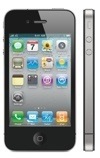Digital Juke 2.0.0 Update Released
20th December, 2001 — Blenheim, New Zealand.
Golden Micro Solutions is pleased to announce the release of Digital Juke
2.0.0, a substantial upgrade to our jukebox mp3 player.
Digital Juke is an MP3 music file player, but one with a very specific
purpose — to act as a jukebox when you’re throwing a party.
While there are many other (software) MP3 players available which may be
better suited for personal use, many fall short when you want to use your
computer as a jukebox for your next party. Digital Juke provides your
guests with a jukebox-like user interface for selecting the tracks, and
also provides a level of security for you, by ensuring your guests cannot
access your computer when the software is running.
This upgrade is free to existing Digital Juke owners, and costs NZ$35/US$15
for new users.
Digital Juke has a number of functions not available in other software mp3
players:
* Export available track lists to a text file, for extra processing before
printing.
* Can be used in ‘full screen’ mode, with the menu and task bar hidden so
that casual users cannot access the rest of your computer.
* Can be used entirely with mouse alone, or with keyboard alone, if you
want to set up a ‘jukebox’ with either of those input devices missing.
* Allows you to select any number of tracks from the playlist to be played
in sequence, and then can revert to random play if no other tracks are
‘queued’.
* Can create a log file of all tracks selected and played, for post party
analysis.
System Requirements
Macintosh: Digital Juke will run on any PowerPC-based Macintosh computer.
It requires at least 7500K of free RAM, and a minimum of System 8.1, and
QuickTime 4.x or later.
Windows: Pentium 120, with Windows 95 or later. Apple’s QuickTime 4.x or
later software must also be installed.
For more information, see the Digital Juke page at:
http://www.golden.co.nz/GoldenMicro/gensoftware/digitaljuke.html
About Golden Micro Solutions Ltd
Golden Micro develops quality software products, including database
systems, for the Macintosh and Windows platforms, and has been doing so
since 1992.



